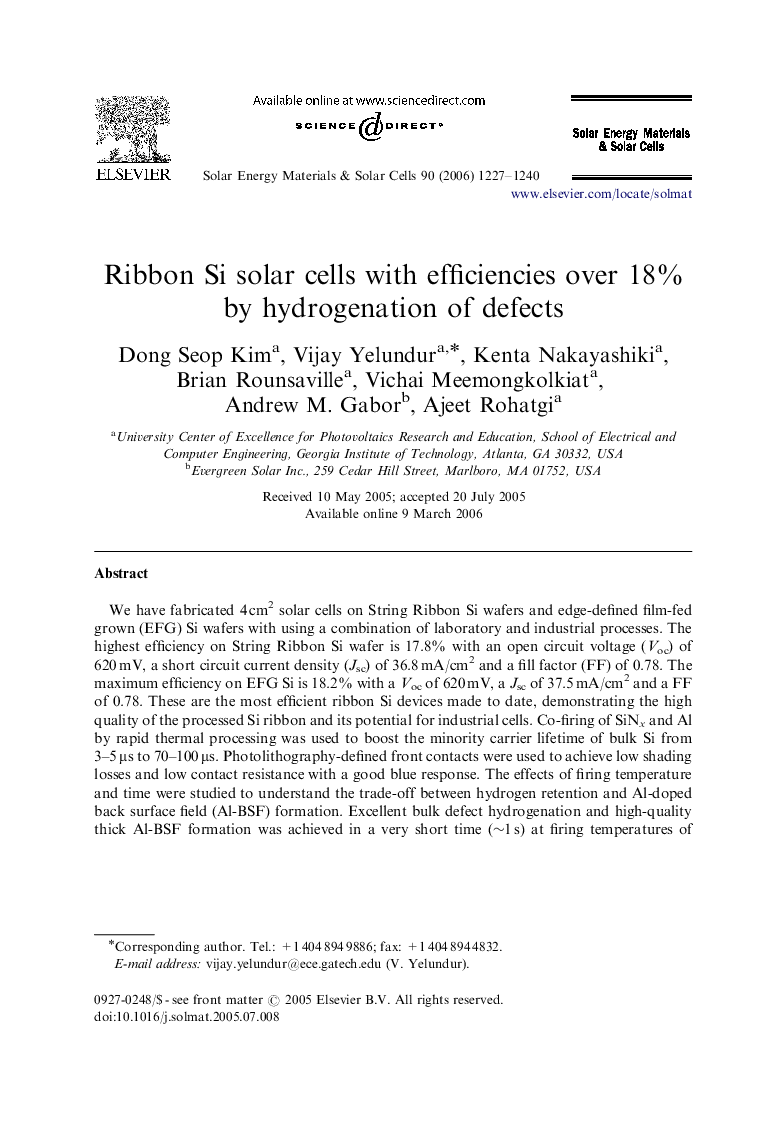| Article ID | Journal | Published Year | Pages | File Type |
|---|---|---|---|---|
| 81076 | Solar Energy Materials and Solar Cells | 2006 | 14 Pages |
We have fabricated 4 cm2 solar cells on String Ribbon Si wafers and edge-defined film-fed grown (EFG) Si wafers with using a combination of laboratory and industrial processes. The highest efficiency on String Ribbon Si wafer is 17.8% with an open circuit voltage (Voc) of 620 mV, a short circuit current density (Jsc) of 36.8 mA/cm2 and a fill factor (FF) of 0.78. The maximum efficiency on EFG Si is 18.2% with a Voc of 620 mV, a Jsc of 37.5 mA/cm2 and a FF of 0.78. These are the most efficient ribbon Si devices made to date, demonstrating the high quality of the processed Si ribbon and its potential for industrial cells. Co-firing of SiNx and Al by rapid thermal processing was used to boost the minority carrier lifetime of bulk Si from 3–5 μs to 70–100 μs. Photolithography-defined front contacts were used to achieve low shading losses and low contact resistance with a good blue response. The effects of firing temperature and time were studied to understand the trade-off between hydrogen retention and Al-doped back surface field (Al-BSF) formation. Excellent bulk defect hydrogenation and high-quality thick Al-BSF formation was achieved in a very short time (∼1 s) at firing temperatures of 740–750 °C. It was found that the bulk lifetime decreases at annealing temperatures above 750 °C or annealing time above 1 s due to dissociation of hydrogenated defects.
